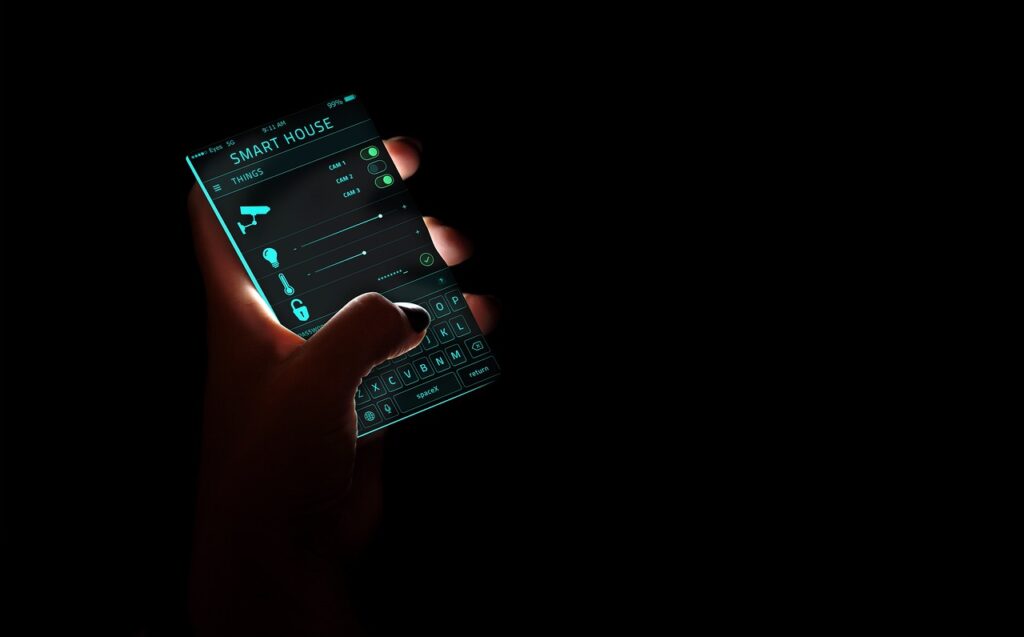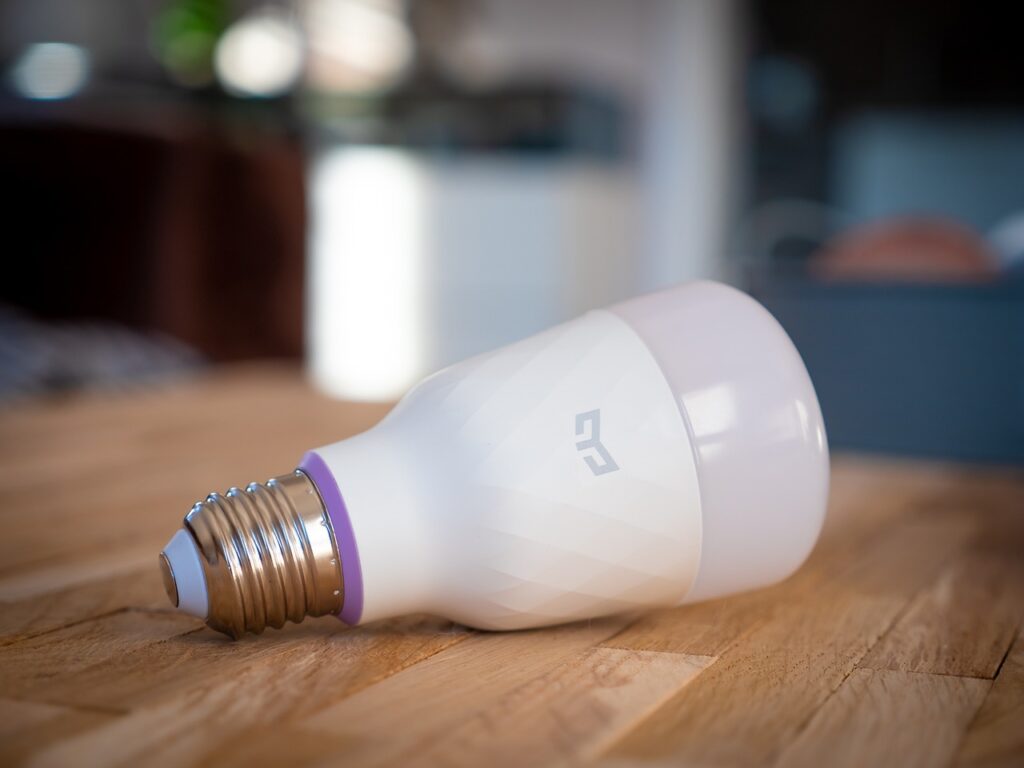Imagine a world where you can control the lighting in your home with just a tap on your smartphone. That world is not so far away, thanks to the advancements in smart lighting technology. Smart lights have revolutionized the way we illuminate our living spaces, offering convenience, energy efficiency, and a touch of futuristic elegance. In this article, we will explore the fascinating world of smart lights, unraveling their inner workings and shedding light on how they can transform your everyday life. So, get ready to discover a world where your lights are as smart as your phone.
What are smart lights
Definition of smart lights
Smart lights refer to a type of lighting technology that can be controlled remotely and offer a variety of features and functionalities beyond traditional lighting. Unlike conventional lights, smart lights can be connected to a network, allowing users to control them using a smartphone, tablet, or voice commands.
Types of smart lights
Smart lights come in various forms, including smart bulbs, smart light strips, and smart light panels. Smart bulbs are similar to regular light bulbs but can be wirelessly controlled and customized. Smart light strips are flexible strips fitted with LED lights and can be used to outline or decorate specific areas. Lastly, smart light panels consist of modular LED panels that can be arranged to create unique and dynamic lighting designs.
Features of smart lights
Smart lights offer a range of features that enhance their functionality. These features include adjustable brightness levels, color-changing capabilities, and the ability to sync with music or movies. Moreover, many smart lights also have built-in timers, motion sensors, and the ability to integrate with other smart devices, making them versatile and convenient to use.
How do smart lights work
Connectivity and communication
Smart lights connect to a Wi-Fi network or use other wireless protocols such as Zigbee or Z-Wave to establish communication with other devices. By connecting to the internet, smart lights enable users to control them remotely from anywhere with an internet connection. This connectivity allows for greater convenience and flexibility in managing the lighting in your home.
Smart light control
Control of smart lights can be done through various methods, including smartphone apps, voice commands, and traditional wall switches. Smartphone apps provide a user-friendly interface that allows you to adjust brightness, colors, and other settings. Voice assistants such as Amazon Alexa and Google Assistant can also be used to control smart lights by issuing voice commands, providing hands-free operation.
Integration with other devices
One of the key advantages of smart lights is their ability to integrate seamlessly with other smart devices. This integration allows users to create smart home ecosystems, where different devices can work together to enhance automation and convenience. For example, smart lights can be synchronized with a smart security system to simulate occupancy while you’re away, or they can be integrated with a smart thermostat to adjust lighting based on the temperature in your home.

Benefits of smart lights
Energy efficiency
Smart lights are designed with energy efficiency in mind. They use LED technology, which is known for its low energy consumption. Additionally, smart lights offer features such as dimming and scheduling, allowing users to customize and optimize their energy usage. By using smart lights, you can reduce energy waste and lower electricity bills without compromising on lighting quality.
Customization and convenience
With smart lights, you have complete control over your lighting environment. You can adjust the brightness, color, and even create customized lighting scenes to match different activities or moods. Whether you want to create a cozy ambiance for a movie night or a vibrant atmosphere for a party, smart lights provide the flexibility to tailor your lighting to suit your preferences.
Enhanced security
Smart lights offer enhanced security features that can help deter potential intruders. By utilizing motion sensors, smart lights can detect movement and automatically turn on, creating the impression that someone is home even when you’re away. This feature can provide added peace of mind and contribute to a more secure home environment.
Installation and setup of smart lights
Choosing the right smart lights
When selecting smart lights, it’s essential to consider factors such as compatibility with your existing devices and the desired features. Different brands offer varying levels of functionality, so it’s crucial to research and choose the smart lights that best align with your needs and preferences.
Installation process
The installation of smart lights is typically straightforward and does not require extensive electrical knowledge. In most cases, it involves unscrewing the existing light bulb, replacing it with a smart bulb, and following the manufacturer’s instructions for connecting the bulb to your wireless network.
Setup and configuration
After installation, the setup and configuration of smart lights typically involve downloading the corresponding smartphone app and following the provided instructions. The app will guide you through the process of connecting the smart lights to your home Wi-Fi network and configuring any desired settings or preferences.

Smart light technology
Wireless protocols
Smart lights utilize various wireless protocols for communication, such as Wi-Fi, Zigbee, and Z-Wave. Wi-Fi is a common choice for smart lights as it provides a reliable and widely supported connection. Zigbee and Z-Wave are mesh networking protocols that allow smart lights to communicate with each other and create a decentralized network of devices.
Compatibility with voice assistants
Many smart lights are compatible with popular voice assistants such as Amazon Alexa and Google Assistant. This compatibility enables users to control their smart lights using voice commands, providing a hands-free and convenient experience. By simply saying a command like “Alexa, turn on the living room lights,” you can effortlessly control your lighting environment.
Smart light apps
To control and customize smart lights, manufacturers often provide smartphone apps that allow users to adjust settings, create lighting schedules, and even sync lights to music or movies. These apps offer an intuitive interface and can be accessed from anywhere with an internet connection, giving you full control over your smart lights.
Controlling smart lights
Using traditional wall switches
While smart lights can be controlled using smartphone apps and voice commands, they typically still retain the functionality of traditional wall switches. This ensures that you can operate the lights manually if desired, providing convenience for those who prefer a more conventional control method.
Smart light control methods
Smart lights offer various control methods beyond traditional switches. Smartphone apps allow for precise control and customization, while voice commands offer hands-free operation. Additionally, smart lights can be controlled using remote controls, touch-sensitive panels, or even through smart home hubs and automation systems.
Automation and scheduling
One of the significant advantages of smart lights is their ability to automate and schedule lighting. By setting up specific schedules or using motion sensors, smart lights can turn on or off automatically when you enter or leave a room. This automation can contribute to energy savings and create a more convenient and seamless lighting experience.

Popular smart light brands
Philips Hue
Philips Hue is one of the most popular and widely recognized brands in the smart lighting industry. Offering a wide range of smart bulbs, light strips, and accessories, Philips Hue provides versatile and customizable lighting solutions. Their products are known for their high-quality construction, advanced features, and seamless integration with popular smart home ecosystems.
LIFX
LIFX is another prominent brand known for its extensive range of smart lighting products. LIFX bulbs offer vibrant colors, adjustable brightness, and easy integration with various voice assistants and smart home platforms. LIFX bulbs also boast Wi-Fi connectivity, eliminating the need for additional hub devices.
Sengled
Sengled specializes in affordable smart lighting solutions that offer excellent value for money. Their smart bulbs and accessories can be easily integrated with popular voice assistants and offer a range of features such as dimming, color-changing, and scheduling. Sengled’s products are user-friendly and provide a reliable smart lighting experience at an affordable price point.
Challenges and limitations of smart lights
Initial cost
One of the primary considerations when adopting smart lights is the initial cost. Compared to traditional light bulbs, smart lights tend to be more expensive. However, it’s important to consider the long-term savings in energy costs and the added functionality and convenience that smart lights can provide.
Complexity of setup
While the installation and setup of smart lights are generally straightforward, some users may find the initial process slightly more complicated than simply replacing a traditional light bulb. Connecting smart lights to a wireless network and configuring settings may require some technical know-how or assistance from the manufacturer’s support resources.
Dependence on internet connection
Smart lights heavily rely on a stable internet connection to function properly. If your internet goes down or you experience connectivity issues, you may temporarily lose remote control or automation features. However, traditional wall switches will still allow you to manually control the lights, ensuring you are not left in complete darkness.

Future of smart lights
Advancements in smart light technology
As technology continues to advance, so too will smart light offerings. Future smart lights may incorporate more advanced features such as built-in sensors for detecting air quality or gesture control for hands-free operation. Additionally, improvements in energy efficiency and durability will likely make smart lights even more appealing to consumers.
Integration with smart home systems
The future of smart lights lies in their integration with larger smart home systems. As more devices become interconnected, smart lights will play a crucial role in creating cohesive and automated smart homes. Expect to see increased compatibility and seamless integration between smart lights and other smart devices and systems.
Market growth potential
The market for smart lights is expected to continue growing as more consumers recognize the benefits of smart home technology. As the demand for smart lights increases, manufacturers will invest more in research and development, resulting in improved products and increased affordability. The future of smart lights is bright, quite literally.
Conclusion
Smart lights offer a plethora of benefits, from energy efficiency and customization to enhanced security and convenience. With various types and features available, there is a smart lighting solution to suit every need and preference. While there may be some initial challenges in setup and cost, the future of smart lights promises exciting advancements and increased integration with smart home systems. Embracing smart lights can transform your home’s lighting experience and contribute to a more efficient and enjoyable living environment. So why not illuminate your life with the brilliance of smart lights?










